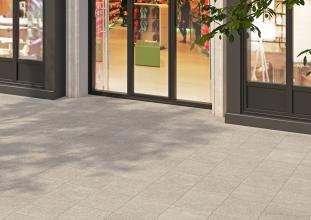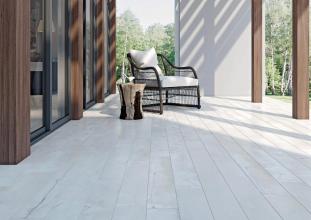Gres tiles are usually sold in packages, where indicates the size of the tiles and the area for which the package is designed. However, the final order is better to count per item. Many sellers allow selecting the tiles separately to the required number.
It is important to calculate the gres per item because the area of the walls or floor, on which it is necessary to install the gres tiles, frequently is not a multiple of the indicated area of several gres packages. The task becomes more complicated when you use different colors of artificial decorative inserts, patterns or mosaic. Moreover, in that case, you need to order several items.
Why is it important not to be mistaken with the gres order?
When you order the ceramic tiles, it is worth considering that the material may be damaged during loading or transporting. Furthermore, it is necessary to take into account the scheme of tile laying and possible defects during its cutting. Of course, at any time you can buy tiles in addition, in case of an accidental breaking of one or two elements and quickly complete the work. Nevertheless, it is unlikely that anyone wants to spend extra time on another trip to the store, in which the consignment of goods could have already ended. What is more, the tone of the tiles of one collection, but from different supplies may be slightly different from each other.
In order to avoid such problems, experienced repairmen usually recommend buying a tile with plenty to spare. From their point of view, such reinsurance is quite rational because for them it is far more important to complete the undertaken work qualitatively and in time. However, in a large area, an excessive order may result in such way: the number of extra tiles will exceed one or even a few packages, which cannot be possible to return. Thus, in calculations, it is best not to make mistakes, neither in the smaller, nor in the larger side.
Methods of gres calculating
In practice, the experts in the building sphere use two methods to calculate the amount of the gres tiles for cladding the floor and the walls.
This is the calculation of the number of ceramic tiles in the area, as well as the calculation of the tiles by the number of elements in the row.
When you start calculating the tiles according to the area, it is necessary to measure the surface very accurately. It is very important to take into account all corners, niches and openings of the surface, which is planned to be covered with the gres tiles. Then, you should calculate the area of a separate tile. Dividing the surface area by the area of the tile, we will get the amount of gres necessary for installing. In this way, it is very convenient to calculate the number of tiles for the flooring because in almost cases the gres tile from one collection is chosen for such covering. When you calculate the ceramic tiles by the number of elements in the row, you need to measure the length of the surface on which it is planned to lay the tile, and to count the number of tiles in a row. Then, determine the required number of tile rows. Multiply the results and you will receive the total number of tiles. This method is often used to calculate the number of tiles for installing on the walls (for example, in a bathroom), where often a tile of different colors, as well as decorative elements is installed.
What stock you need during gres calculating?
The traditional stock for breakage and defects during the calculation of gres tiles ranges from 5-10% in the case of standard horizontal laying and in the range of 10-15% in case of diagonal laying. Besides, usually focus on the upper threshold of the stock for small spaces, and for large areas, a lower value is enough.
How to take into account the decorative elements and non-standard laying
In the case if the decorative inserts and tiling in the form of a mosaic or pattern are used, it is more convenient to draw up a scheme of the covered surface.
Decorative inserts are usually calculated per item, subtracting their final number from the total number of tiles, which belong to a particular collection. You can buy them without any reserves, due to accurate using. If necessary, the decor can be bought separately and the variety of the collections is not critical.
Gres tiles from the different collections, which are used for patterned or mosaic laying, are calculated per item, based on the installing scheme. Buy them in accordance with the standard stock.
Example of gres calculation
Let us consider two methods of calculating tiles, which can be used when buying wall and floor finishing material.
Calculation of tiles for laying on the floor.
For example, we will calculate how many tiles 60x60 cm of the Slate beige collection are necessary for laying on the floor in the bathroom, which size is 3,7 × 3,2 m.
To do this, calculate the floor area of 3,7 × 3,2 = 11,84 m², as well as the area of one taken tile: 0,6 × 0,6 = 0,36 m².
Dividing the floor area by the area of the tile, we get the quantity: 32,8 items (11 packages of 3 tiles in each).
Add the stock to the obtained value and round it up. Result: 11 packages of tiles and a stock – 3 items (7%) in case of horizontal laying and 4 items (12%) in the case of diagonal laying.
Calculation of tiles for laying on the walls.
We will calculate how many tiles 30x60 cm of the Concrete collection is needed for cladding in the bathroom 3,7 × 3,2 m with a ceiling height of 3 m and a doorway of 200 × 60 cm. So let us imagine that we use gres tiles of dark and light shades.
First, calculate the length of the perimeter of the bathroom floor: 2 × (3,7 + 3,2) = 13,8 m. Take the width of the doorway from this value: 13,8 - 0,6 = 13,2 m and dividing this number by the width of the tile (0,6 m), we will get the number of dark tiles in one row – 22 items. If it is planned to lay a dark tile in 3 rows, it is enough to have 66 tiles. Adding a stock for horizontal laying, we get 10 packages for 7 items, taking into account the stock (7%).
Similarly, calculate the amount of light tile, 3 rows of which will be installed at the height of the doorway, and 4 – above it, so that is the full perimeter of the bathroom will be taken into account. We received 66 + 92 = 158 tiles. Adding a stock of 6%, we get 24 packages of 7 tiles in each.



